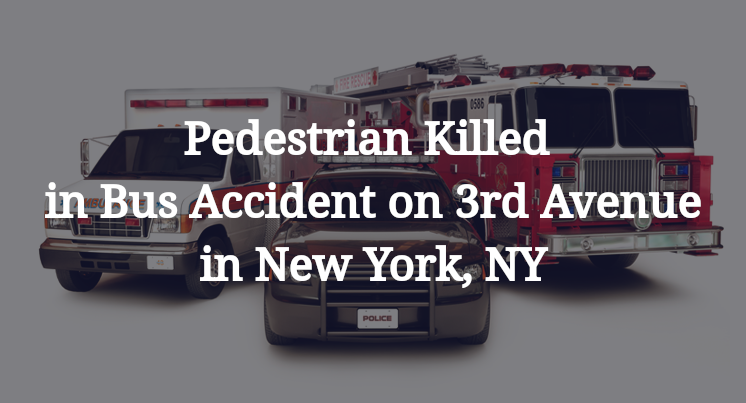Pedestrian Killed in Bus Accident on 3rd Avenue in New York, NY
New York, NY — June 16, 2025, a pedestrian was killed in a bus accident at about 5:30 a.m. on 3rd Avenue in Manhattan.
Authorities said a pedestrian was crossing East 28th Street from east to west when he was hit by a northbound Metropolitan Transportation Authority bus.

The pedestrian, whose name has not been released yet, died after being transported to a local hospital, according to authorities.
No arrests have been made in relation to the crash at this time.
Authorities have not released any additional information about the Manhattan crash. The accident is still under investigation.
Commentary by Attorney Michael Grossman
When a pedestrian is hit and killed by a city bus in a major intersection like East 28th and 3rd Avenue, it raises pressing questions about visibility, driver conduct and the systems in place to prevent exactly this kind of thing. What happened in those moments before impact? Could it have been avoided? Right now, we just don’t have enough information to say.
Authorities have confirmed that a pedestrian was crossing the street when he was struck by a northbound MTA bus. But what we don’t know is just as important as what’s been released. Was the pedestrian crossing with the light? Was the bus making a turn, or moving straight through the intersection? What was the bus driver's view like at that hour? Was glare or darkness a factor? Was the bus in motion at full speed, or creeping through traffic?
Crashes involving buses, especially municipal vehicles like those operated by the MTA, are typically captured by multiple systems. Many MTA buses have in-cab cameras that show the driver’s view and behavior. There’s also the possibility of external dash cams, which could reveal exactly where the pedestrian was and how the driver responded. Beyond cameras, the vehicle's onboard data system should record things like speed, braking and acceleration leading up to the crash.
In other cases I’ve worked on involving pedestrian deaths and public vehicles, there’s often a critical window of just a few seconds where driver awareness, reaction time and line of sight make all the difference. Sometimes it's clear the pedestrian was not visible until the last moment. Other times, the evidence shows that the driver was distracted or failed to yield as required by law. Without access to that data, without an independent investigation, none of these possibilities can be ruled out.
Unanswered Questions That Will Matter
- Was the pedestrian in the crosswalk, and if so, did he have the right-of-way?
- Did the bus have a green light, or was it turning through a pedestrian signal?
- What do surveillance cameras from nearby businesses show?
- Has the MTA reviewed this driver’s history for prior incidents?
Until these questions are answered, the public can't know who was truly at fault, or whether anything could have prevented this. Sometimes a crash is just a terrible misalignment of circumstances. Other times, it's the result of negligence hidden behind layers of bureaucracy. Either way, the truth will come from evidence, not assumption.
Key Takeaways
- It's not yet clear whether the pedestrian or bus had the legal right-of-way.
- Critical evidence may include dash cams, in-cab footage, black box data and street-level surveillance.
- Authorities haven’t said whether distraction, speed or visibility played a role.
- A proper investigation will need to focus on both the driver's actions and MTA oversight.
- Without more facts, it's too soon to assign blame, but not too soon to demand answers.

“These are essential reads for anyone dealing with the aftermath of a truck wreck”– Attorney Cory Carlson